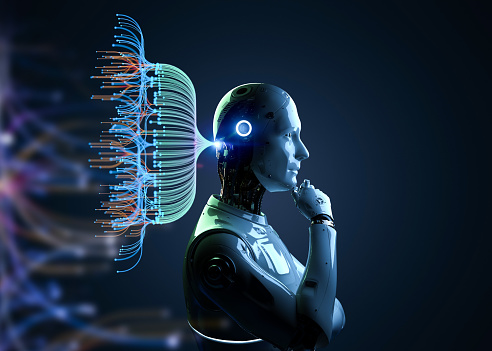Artificial intelligence learning roadmap in 2023
13 Feb 2023Here is a general outline that one could follow for an artificial intelligence (AI) learning roadmap, although it can vary depending on the person's background and objectives:
Artificial Intelligence roadmap for Beginners
Foundational Mathematics: AI relies heavily on mathematics, especially linear algebra, calculus, and probability. Brush up on these concepts and study them in-depth.
Programming: Learn at least one programming language, such as Python, which is commonly used for AI development.
Data Structures and Algorithms: AI algorithms use various data structures, so it's important to understand concepts such as arrays, linked lists, trees, and graphs.
Machine Learning: Start with supervised learning, which is the most commonly used form of machine learning, and then move on to unsupervised and reinforcement learning.
Deep Learning: Study neural networks and learn about popular deep learning frameworks such as TensorFlow and PyTorch.
Natural Language Processing (NLP): NLP is a subfield of AI that deals with processing and analyzing human language. Study NLP concepts such as sentiment analysis and text classification.
Robotics: Robotics involves using AI to control physical machines. Study robot kinematics, dynamics, and control.
Applications: Apply your AI knowledge to real-world problems by working on projects or participating in hackathons.
Stay Up-to-Date: AI is a rapidly evolving field, so it's important to stay current by reading research papers, attending conferences, and participating in online communities.
This roadmap can be customized based on your background, interests, and career goals. It's also important to note that AI learning is a continuous process, and it's essential to keep practicing and learning new things to stay ahead in this field.
What is AI
Artificial Intelligence (AI) refers to the simulation of human intelligence in machines that are programmed to think and act like humans. AI is a multidisciplinary field that encompasses computer science, mathematics, and engineering to create intelligent systems that can perform tasks that typically require human intelligence, such as visual perception, speech recognition, decision-making, and language translation.
At its core, AI is based on the idea of creating computer systems that can learn from data and make predictions or decisions based on that learning. This is achieved through algorithms, mathematical models that process data and make predictions based on that data.
There are two main types of AI: narrow or weak AI and general or strong AI. Narrow AI is designed to perform specific tasks, such as image recognition or language translation, and is typically limited to that specific task. In contrast, general AI is designed to perform a wide range of tasks and can adapt to new tasks as needed.
One of the key enabling technologies for AI is machine learning, which is a type of AI that allows systems to learn from data without being explicitly programmed. Machine learning algorithms use statistical models to analyze data and make predictions based on that data. There are two main types of machine learning: supervised learning, where the algorithm is provided with labeled data and learns to predict the labels for new data, and unsupervised learning, where the algorithm is provided with unlabeled data and must find patterns in the data on its own.
Another key technology in AI is deep learning, which is a type of machine learning that uses artificial neural networks to process and analyze data. Deep learning algorithms are designed to mimic the structure and function of the human brain, and they have proven to be highly effective in tasks such as image recognition, speech recognition, and natural language processing.
The potential benefits of AI are vast, and they range from increased efficiency and productivity in a variety of industries to improved healthcare and education. For example, AI can be used to analyze large amounts of medical data to help diagnose diseases, develop new treatments, and improve patient outcomes. In finance, AI can be used to analyze market data and make predictions about stock prices, which can lead to improved investment decisions.
However, there are also concerns about the potential negative consequences of AI. For example, AI has the potential to displace jobs and cause significant economic disruption, and there are also concerns about the potential misuse of AI systems, such as the use of AI in military applications.
In conclusion, AI is a rapidly evolving field that has the potential to greatly impact and improve our lives, but it also presents significant challenges and potential risks that must be addressed. It's important to continue to invest in research and development in AI to unlock its full potential and ensure that it is used in ways that are safe, ethical, and beneficial to society.
Back to Home Page





